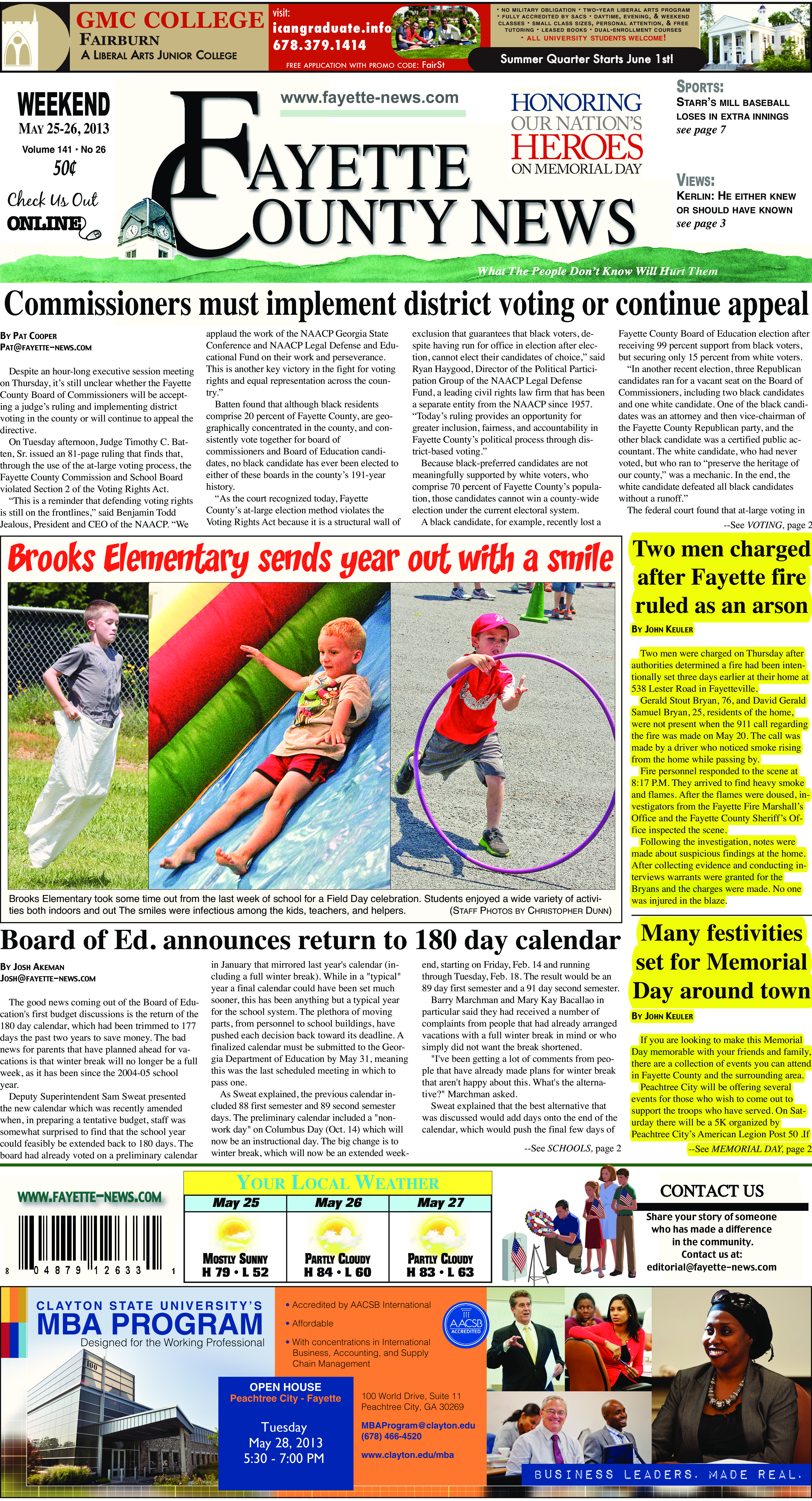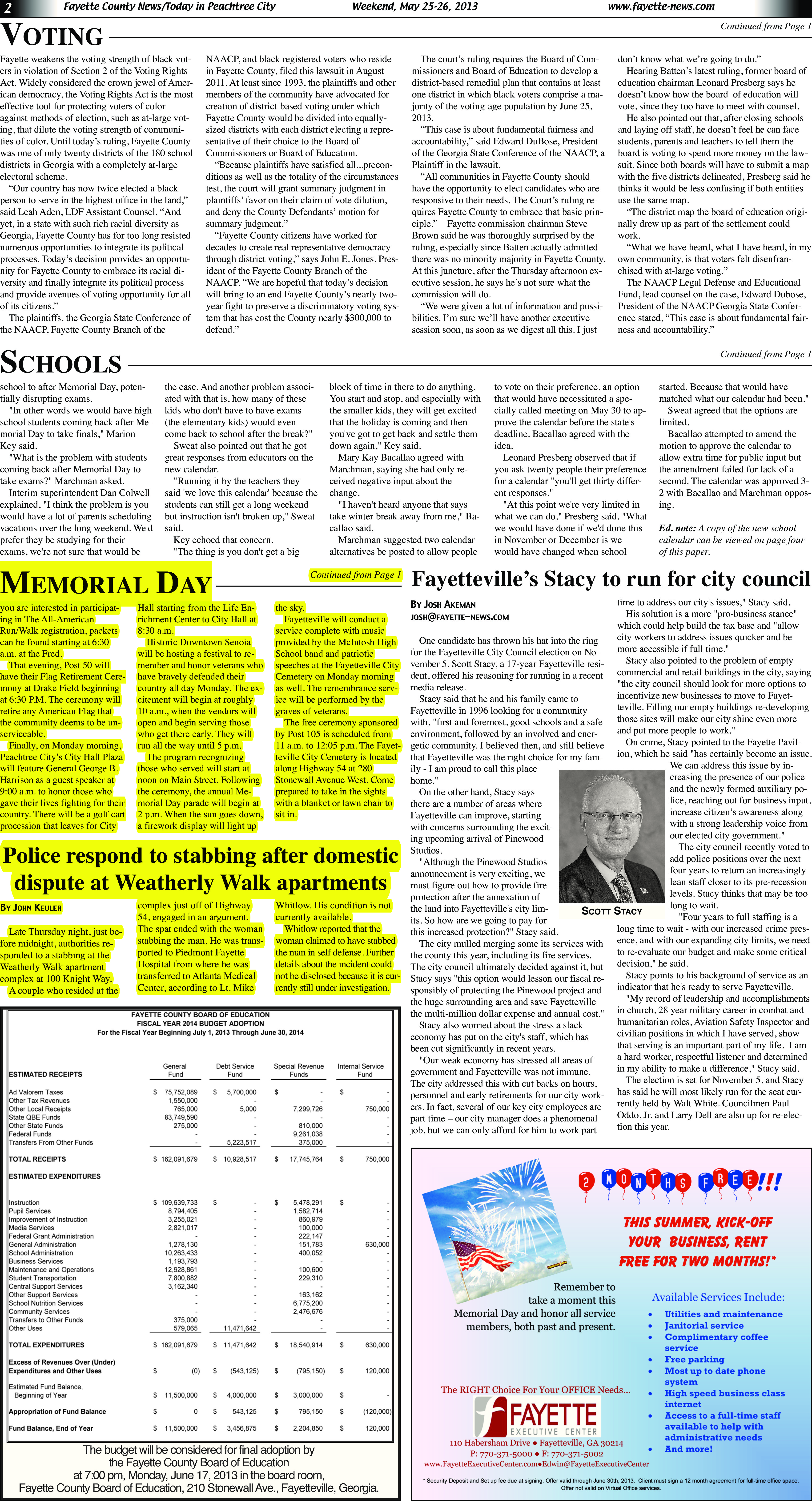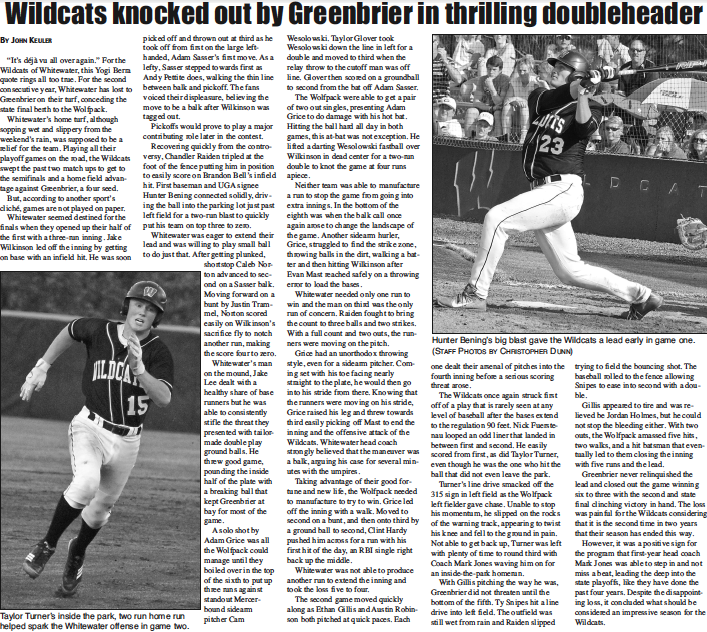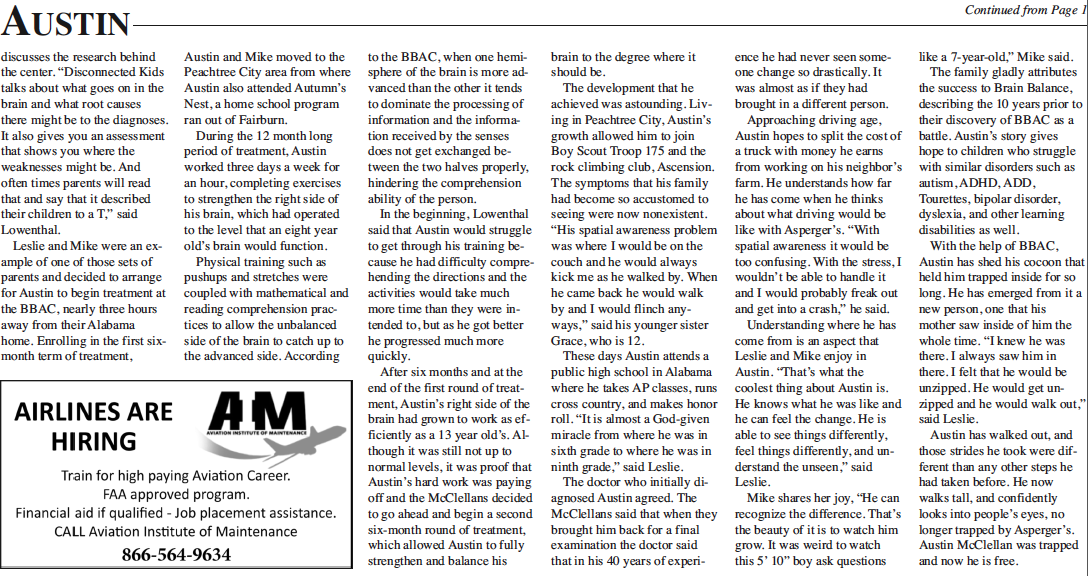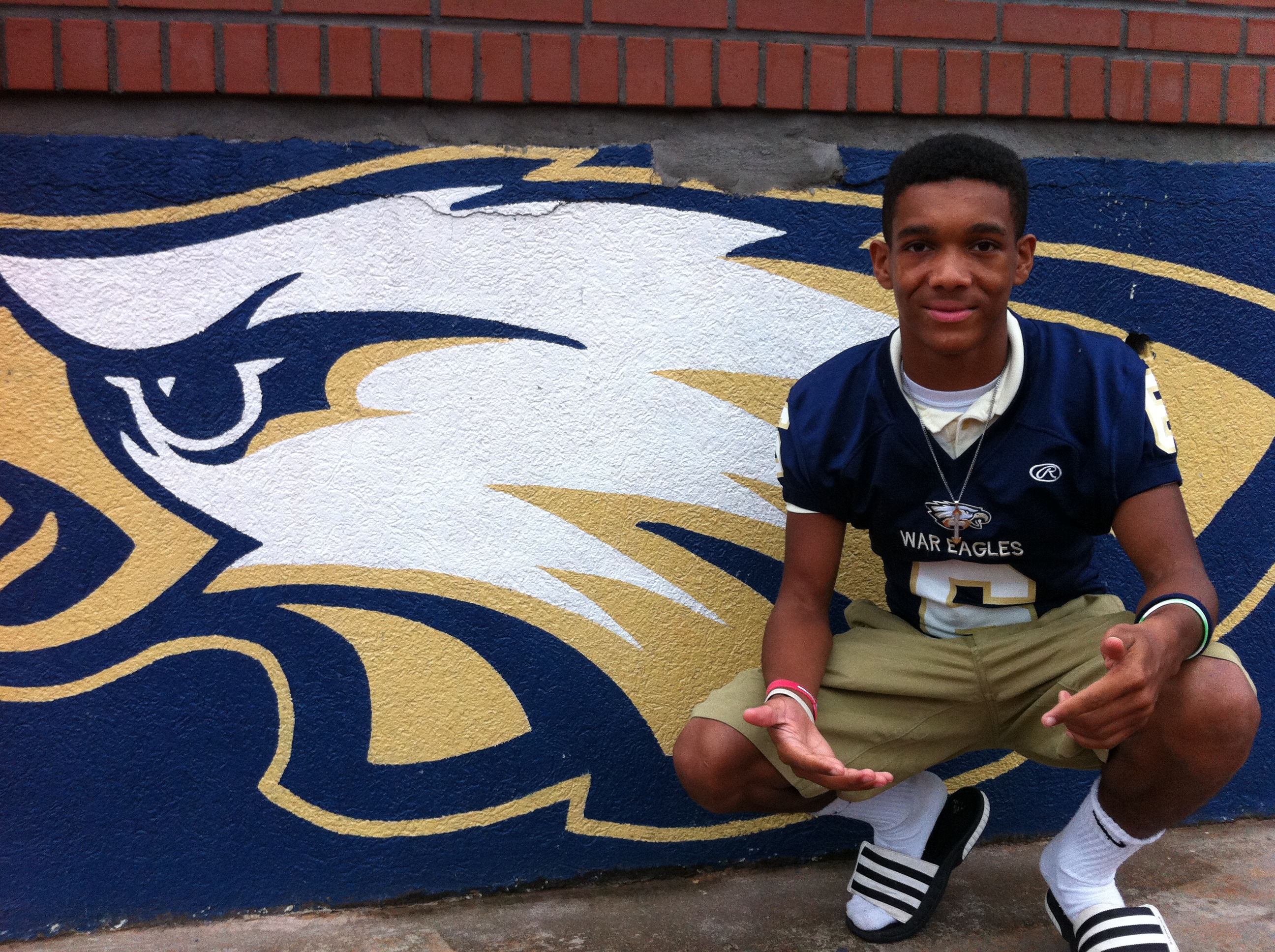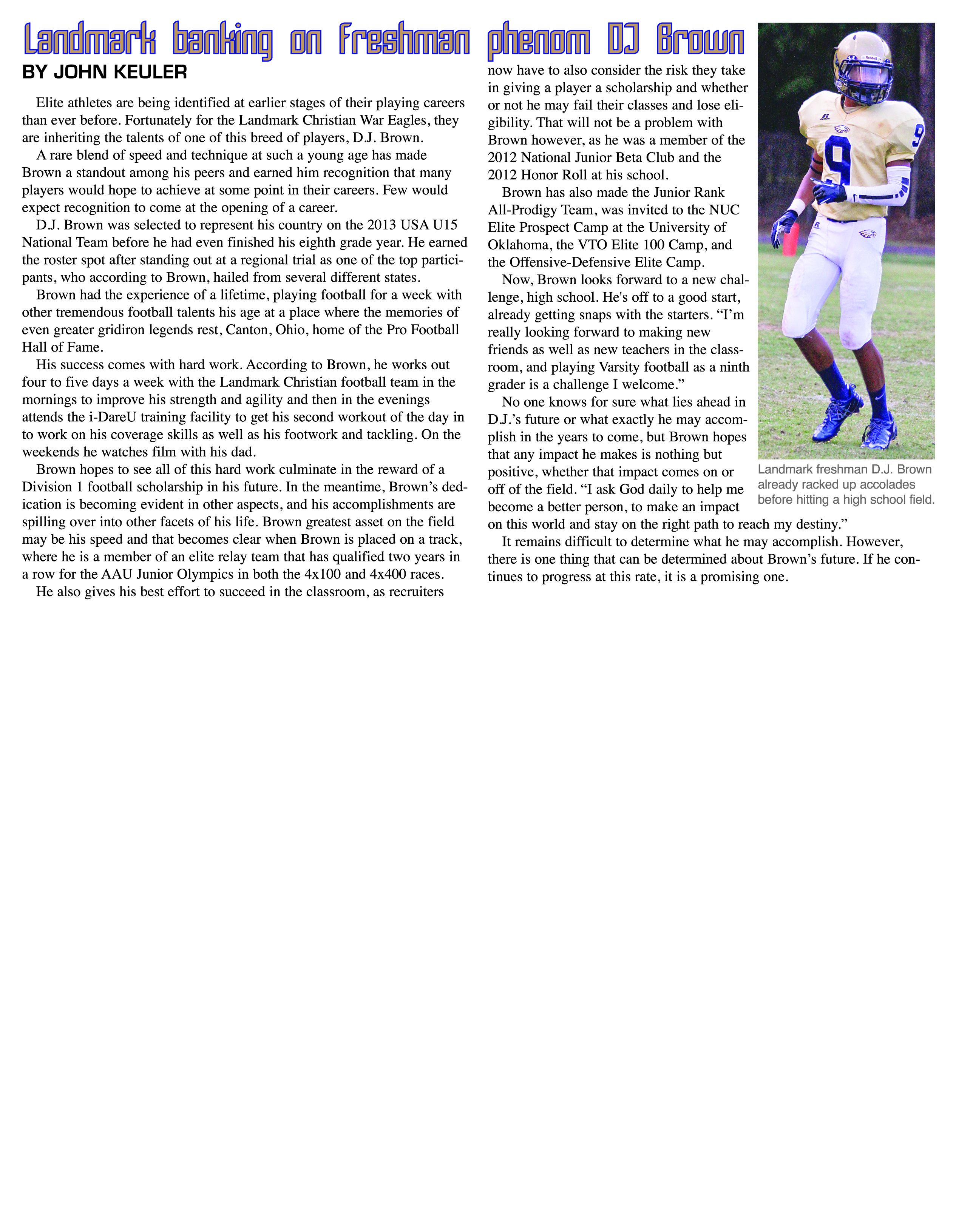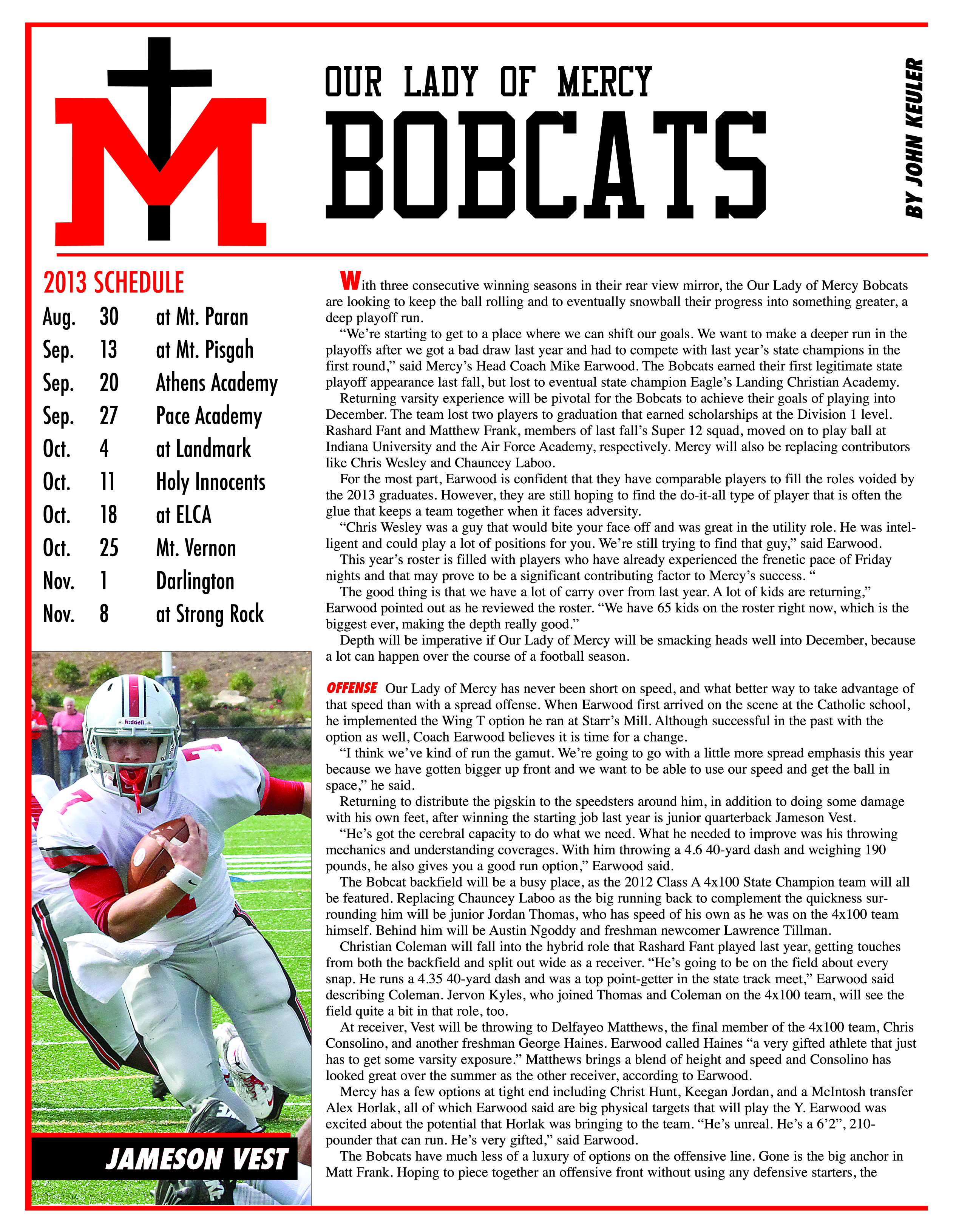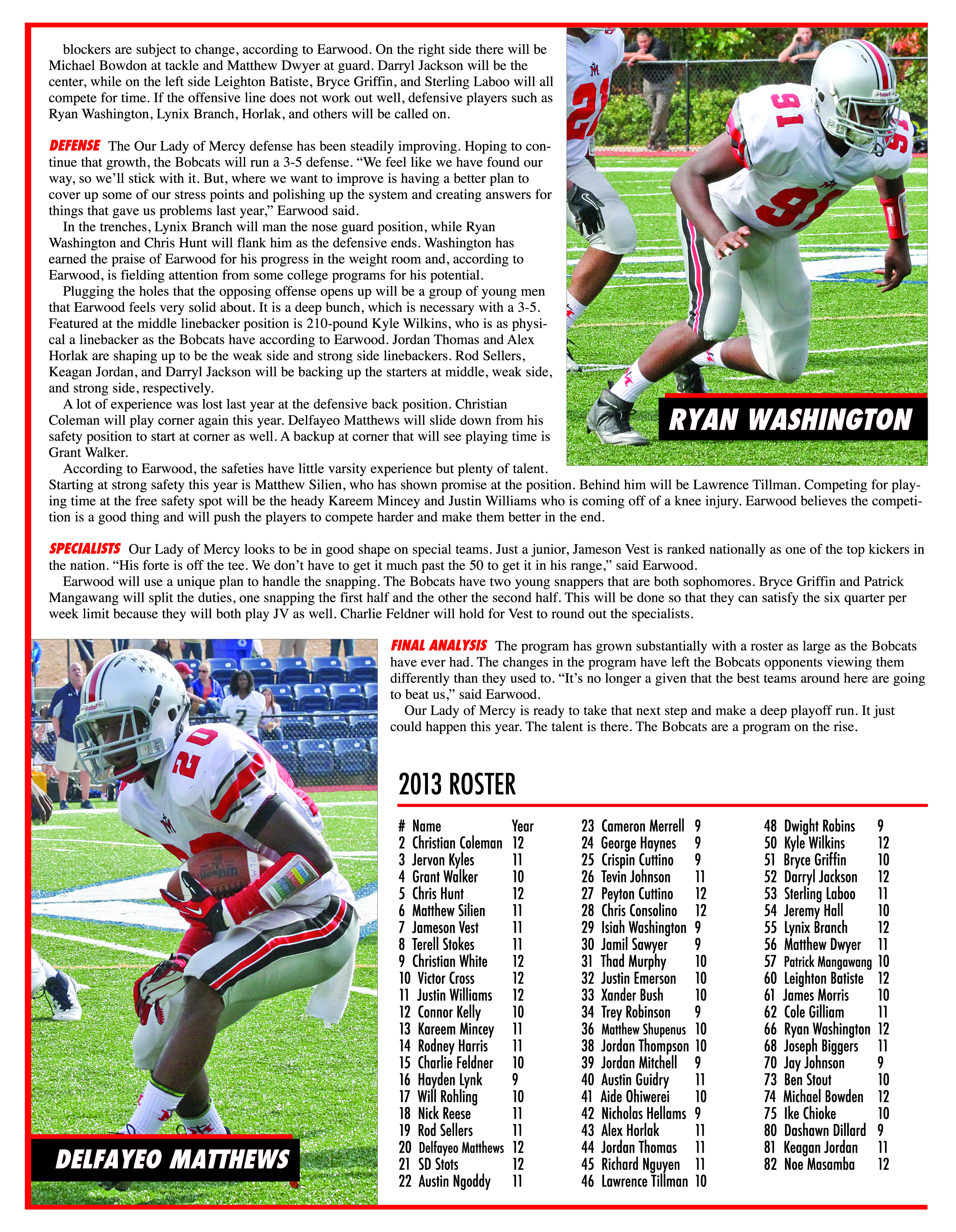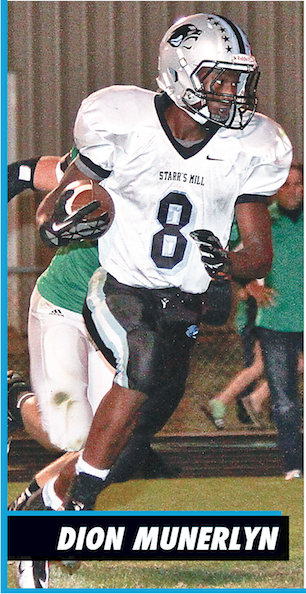Blog
Botched Bust Leaves Sheriff Department Embarrassed
Whitewater vs. Greenbriar Playoff Baseball Recap
New Treatment Helps Teen Make Drastic Transformation
Our Lady of Mercy vs. Pace Football Recap
Landmark’s Young Football Standout DJ Brown
Our Lady of Mercy 2013 Football Preview
Starr’s Mill 2013 Football Preview
Trouble With Hockey
“He went down. He was done and then after I hit him I just couldn’t even see,” Alek Salfia says trying to remember a collision in a hockey game that almost killed him. Luckily, the temporary blindness that the stocky, brown-haired, University of North Carolina-Charlotte freshman experienced four years ago was just the result of a concussion after he delivered an unintentional head-to-head blow to an opponent.
“My parents thought I was on drugs or something because I was completely out of it for three days,” Salfia recalled. Then on the third day of this concussion-induced fog, someone in the weight room walked by him carrying a barbell and the end of the bar struck Salfia in the back of the head. Salfia blacked out and has no memory of the incident.
Salfia’s recollection of the string of events is understandably rough, but what is disturbing about his story is that it is pieced together in a reversed order. According to his mother, Laura Salfia, Alek has a totally twisted version of the tale. “It was opposite. It was weightlifting first and then hockey. He may not even realize that that was the order of things,” Laura says. Even though mother and son do not share the same memory of how the concussions occurred, they echo each other when remembering the symptoms that followed.
When Alek returned from his tournament, he slept for around 16 straight hours. Then on Monday at football practice, Alek passed out during warm-ups and was taken to the hospital. There, the doctor told the Salfias that he could have died because of the amount of swelling in his brain.
Alek’s story is severe but not unusual. Sports are the cause of around 300,000 concussions annually, according to the University of Pittsburgh’s Brain Trauma Research Center. All athletes are being affected by the concussion epidemic and are directing their attention to concussion awareness, especially hockey players. From 2008 to 2010, 22.5% of all injuries in high school hockey were concussions, the highest rate of any sport, according to The American Journal of Sports Medicine. However, the NHL has made concentrated efforts to make the game safer, and hopefully the effects will trickle down to the youth levels as well.
The NHL has received heavy criticism in the media because of its concussion rate. In response, the league made changes to prohibit contact to the head as the main point of contact in the 2010-2011 season. Then, prior to the 2011-2012 season, all hits or checks to the head were outlawed.
Richard Kuerston has been a hockey official since 1994 so he has seen the game evolve as the rules change, especially on the youth circuit. Kuerston is pleased with the direction the game is going from three years ago when USA Hockey took checking out of the leagues with 12-year-olds and younger. Now, checking is not allowed until a player is 14.
“It took about a week and a half for me to decide I loved those rules,” Kuerston says. “It’s amazing how much better our players are when they’re not always worried about getting pounded or pulverized through the glass.” Kuerston may love the new rules, but they are not helping.
Despite the rule changes that the NHL put into place on checking to the head, the concussion rate escalated in 2010-2011 compared to the 2009-2010 season according to a study conducted by the Ontario Neurotrauma Foundation and the Canadian Institutes of Health Research. In 2011-2012 the rate was the consistent to 2010.
Not only did the number of concussions go up after precautions were put into place, but according to the NHL’s hockey operations staff, 44 percent of all of the concussions that were recorded during the season were caused by perfectly legal hits. Only 17 percent were from illegal hits, and just 8 percent of concussions were suffered during a fight.
With legal hits accounting for most of the concussions, statistics show that the game may not ever change enough to be considered safe at the elite levels. Since the sport cannot change, innovation is focused on the gear, especially helmets.
Bauer, a hockey equipment company, is the first in line to solve the sport’s problems. Bauer has come up with a new helmet design that is supposed to protect its wearer against rotational force. Emory University’s Wendy Wright, an expert in brain trauma backs up Bauer’s claims with medical science. “Your head might get whipped in a funny motion and the brain itself can actually hit up against the skull. Any impact to the brain, and that can include the brain hitting up against the skull, can cause a concussion,” Wright says.
Fighting is responsible for eight percent of the concussions and many think that that percentage can be eradicated altogether by banning fighting. Others still hold the view that fighting has a role in the NHL. Kuerston is one of those people. “I think there is a way that the game is influenced and messages are sent from one team to another about what is and isn’t acceptable behavior. But do I think that makes our game more skilled and more finesse driven and more competitive at the pro level? I’m not sure about that,” Kuerston says.
Enforcers play the most physical position in hockey. They are the first ones to rip their gloves off for a fight. In years past, these players were celebrated as gritty men who embodied the sport. Players such as Derek Boogaard, Rick Rypien, and Wade Belak were all respected and even feared among their peers. Every one of them established themselves as fixtures in the NHL, but not a single one of them lived past the age of 35.
Boogaard, Rypien and Belak’s deaths all occurred in the summer of 2011. Rypien and Belak’s deaths were both ruled suicides, a result of their documented clinical depressions, neurological issues possibly stemming from their concussion histories.
Concussions often lead to headaches that go away after some time, but some brain injuries cause major damage, such as the three who died in 2011. “A concussion itself should result in temporary damage unless the concussion happens over and over again or it’s so severe it’s causing bleeding around the brain cells,” Wright explained. “Bottom line is that a concussion is a traumatic brain injury that results in some type of neurologic problem.”
In a competitive league like the NHL, players’ teams often cannot afford lengthy visits to the disabled list and so players will do anything to dull any pain to keep themselves on the ice. However, Wright warns against going to extremes to alleviate suffering with a concussion. “There are some medications that actually should be avoided when recovering from a concussion, and alcohol should be avoided when recovering,” says Wright. Boogaard’s cause of death was an overdose of painkillers mixed with alcohol as he was still recovering from post-concussion symptoms, the perfect storm.
A large part of safeguarding athletes of all sports against concussions is making sure that they do not return to competition before they are ready. The difficult part is diagnosing a concussion and knowing when the right time to return to action is. The damage lies within the head and sometimes shows little physical evidence of existence.
To combat that struggle, teams of all sports and ages are using ImPACT testing. Over 7,400 high schools and more than 1,000 universities and colleges now utilize the technology, according to impacttest.com. Wright vouches that the ImPACT tests catches minute symptoms that don’t show themselves externally, “It tests what we would call the higher level functionings of the brain. The parts of the brain that helps us organize, plan, pay attention to detail,” she says.
However, even improved helmets and the use of ImPACT testing have not decreased the rate of concussions in the NHL. A man who teaches close combat skills to SWAT teams and other law enforcement agencies, Robbie Cressman, believes in a drastically different method to reduce the number of concussions.
Cressman believes that the technology-based culture that exists today has detracted from skaters’ abilities to absorb a hit and the players of the past were more accustomed to using that ability. “There was more familiarity with physical contact just in life and that would have translated into the game,” Cressman says.
Cressman has a method that teaches people to be more physical and gives them the ability to absorb and avoid hits. Avoiding collisions is where he thinks the solution lies. “When you try to improve safety equipment that’s a good thing, but if that’s your main focus you’re just trying to have people crash safer when our objective should be to have them crash less, or not at all,” Cressman says.
Retraining hockey players to have better reactions is not the most conventional way to protect players from getting concussions, but it certainly cannot hurt. Maybe with Cressman’s help, the trio of enforcers Boogaard, Rypien, and Belak might have lived to see at least 60 years pass by.
Alek, a former enforcer as well, could still feel the effects of his concussions even three years later. “Even last year as a senior, I would hit somebody and have a weeklong headache, seeing stars and stuff,” Alek says. Alek recognizes that it is probably for the best that he does not play hockey in college. If hockey cannot get its concussion rate under control, athletes everywhere may follow the thinking of some Canadian boys and decide that it is probably for the best that they do not play hockey at all.
